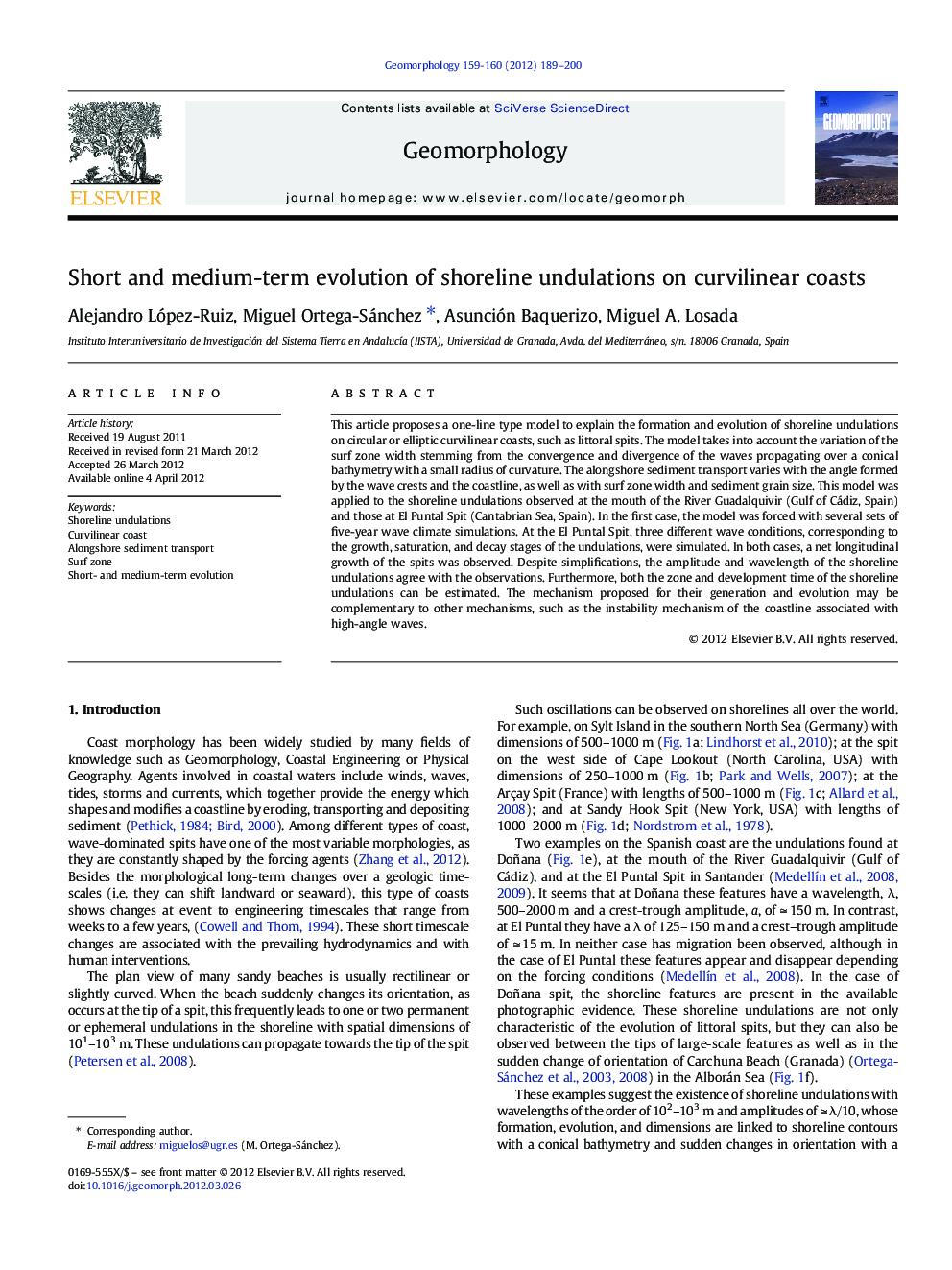| Article ID | Journal | Published Year | Pages | File Type |
|---|---|---|---|---|
| 4685149 | Geomorphology | 2012 | 12 Pages |
Abstract
This article proposes a one-line type model to explain the formation and evolution of shoreline undulations on circular or elliptic curvilinear coasts, such as littoral spits. The model takes into account the variation of the surf zone width stemming from the convergence and divergence of the waves propagating over a conical bathymetry with a small radius of curvature. The alongshore sediment transport varies with the angle formed by the wave crests and the coastline, as well as with surf zone width and sediment grain size. This model was applied to the shoreline undulations observed at the mouth of the River Guadalquivir (Gulf of Cádiz, Spain) and those at El Puntal Spit (Cantabrian Sea, Spain). In the first case, the model was forced with several sets of five-year wave climate simulations. At the El Puntal Spit, three different wave conditions, corresponding to the growth, saturation, and decay stages of the undulations, were simulated. In both cases, a net longitudinal growth of the spits was observed. Despite simplifications, the amplitude and wavelength of the shoreline undulations agree with the observations. Furthermore, both the zone and development time of the shoreline undulations can be estimated. The mechanism proposed for their generation and evolution may be complementary to other mechanisms, such as the instability mechanism of the coastline associated with high-angle waves.
Related Topics
Physical Sciences and Engineering
Earth and Planetary Sciences
Earth-Surface Processes
Authors
Alejandro López-Ruiz, Miguel Ortega-Sánchez, Asunción Baquerizo, Miguel A. Losada,
